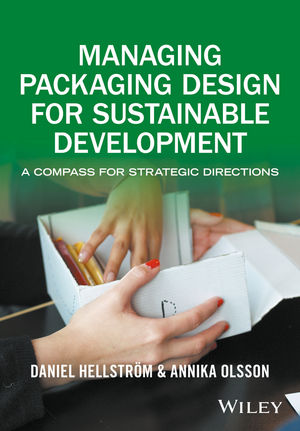Supply Chain Risk Management: A Systematic Approach to a Board-Level Challenge

The flexible packaging business demands high-volume manufacture of quality-critical (and sometimes safety-critical) products. Firms rely on continuous supplies of high quality inputs such as plastics, liners and adhesives. And tight production tolerances mean that once suppliers are qualified and have learned your requirements, it can be costly and difficult to replace them. But the lesson from many industries is that companies cannot take suppliers, and continuous supply, for granted.
Exposure to supply chain risk has increased substantially in recent years. One reason is that supply chains are becoming more vulnerable: globalization has made them highly complex, and just-in-time inventory means less. A second reason for increased exposure is that risk events are increasingly frequent and severe: for example, Iceland’s volcanic eruption, Japan’s tsunami and Thailand’s floods occurred in quick succession, affecting many global supply chains. Meanwhile events originating in the lower tiers of supply chains can have enormous impact, but are extremely difficult to detect or anticipate. Examples include the closure of Merck's Xirallic plant at Onahama following the Japanese tsunami, and the explosion at the Evonik plant in Marl, Germany.
Supply chains often involve hundreds of direct suppliers, who in turn are reliant upon many thousands of lower-tier firms. This scale makes the identification and assessment of risks a challenging task, yet many businesses still use overly-simple approaches that can give a false sense of security. For example, it’s dangerous to rely on “traffic light” indicators of risk levels: an amber indicator can be viewed as indicating medium risk, but may actually conceal missing information and hence major risks. Similarly, the popular technique of conducting risk assessments only on the top 100 suppliers by spend can mean that risky areas are overlooked. Simple models that just add and multiply values aren’t equipped to handle incomplete information – such as lack of knowledge of the supplier’s own supply chain – and this is something that’s vital for a full understanding of risk.
In the face of these challenges, what can flexible packaging converters and suppliers do to understand and more efficiently manage their supply chain risks?
Some leading companies are using advanced mathematical tools to model risks in any tier of the supply chain, and how this might impact on their own business. For many companies, this is too costly and resource-intensive, but they can still take some basic practical steps to manage supply chain risks. Based on our recent work with clients, here are our top five actions:
- Consider all of the different dimensions of risk. Many companies concentrate on the risk of suppliers going bankrupt, whereas IT failures and logistics problems cause disruption more often
- Be honest about what you know about supply chain risks, and what you don’t. Very often, major risks are hidden by a lack of information, disguised as “amber” on a risk assessment
- Consider risk through the supply chain – not just for your own Tier 1 suppliers. What risks do their suppliers, or their suppliers’ suppliers, present?
- Don’t assume that you are alone – the largest firms and governments are frequently taken by surprise when supply chain risks materialize
- Empower staff to respond quickly – it is impossible to predict or avoid all risks, and the ability of your team to minimize the impact of risks after they have occurred is often vital
The flexible packaging business demands high-volume manufacture of quality-critical (and sometimes safety-critical) products. Firms rely on continuous supplies of high quality inputs such as plastics, liners and adhesives. And tight production tolerances mean that once suppliers are qualified and have learned your requirements, it can be costly and difficult to replace them. But the lesson from many industries is that companies cannot take suppliers, and continuous supply, for granted.
Exposure to supply chain risk has increased substantially in recent years. One reason is that supply chains are becoming more vulnerable: globalization has made them highly complex, and just-in-time inventory means less. A second reason for increased exposure is that risk events are increasingly frequent and severe: for example, Iceland’s volcanic eruption, Japan’s tsunami and Thailand’s floods occurred in quick succession, affecting many global supply chains. Meanwhile events originating in the lower tiers of supply chains can have enormous impact, but are extremely difficult to detect or anticipate. Examples include the closure of Merck's Xirallic plant at Onahama following the Japanese tsunami, and the explosion at the Evonik plant in Marl, Germany.
Supply chains often involve hundreds of direct suppliers, who in turn are reliant upon many thousands of lower-tier firms. This scale makes the identification and assessment of risks a challenging task, yet many businesses still use overly-simple approaches that can give a false sense of security. For example, it’s dangerous to rely on “traffic light” indicators of risk levels: an amber indicator can be viewed as indicating medium risk, but may actually conceal missing information and hence major risks. Similarly, the popular technique of conducting risk assessments only on the top 100 suppliers by spend can mean that risky areas are overlooked. Simple models that just add and multiply values aren’t equipped to handle incomplete information – such as lack of knowledge of the supplier’s own supply chain – and this is something that’s vital for a full understanding of risk.
In the face of these challenges, what can flexible packaging converters and suppliers do to understand and more efficiently manage their supply chain risks?
Some leading companies are using advanced mathematical tools to model risks in any tier of the supply chain, and how this might impact on their own business. For many companies, this is too costly and resource-intensive, but they can still take some basic practical steps to manage supply chain risks. Based on our recent work with clients, here are our top five actions:
- Consider all of the different dimensions of risk. Many companies concentrate on the risk of suppliers going bankrupt, whereas IT failures and logistics problems cause disruption more often
- Be honest about what you know about supply chain risks, and what you don’t. Very often, major risks are hidden by a lack of information, disguised as “amber” on a risk assessment
- Consider risk through the supply chain – not just for your own Tier 1 suppliers. What risks do their suppliers, or their suppliers’ suppliers, present?
- Don’t assume that you are alone – the largest firms and governments are frequently taken by surprise when supply chain risks materialize
- Empower staff to respond quickly – it is impossible to predict or avoid all risks, and the ability of your team to minimize the impact of risks after they have occurred is often vital
Looking for a reprint of this article?
From high-res PDFs to custom plaques, order your copy today!







